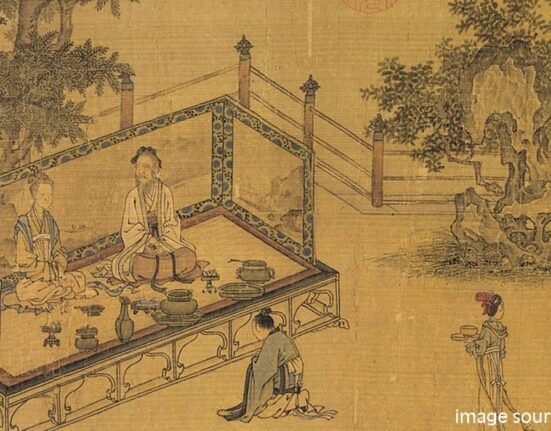The Industrial Revolution refers to the era in which economic production shifted from the use of hand tools to the use of power machinery, fueled primarily by coal and steam. Most of the process took place between 1750-1850 in Europe. The Industrial Revolution led to the change from an agrarian and handicraft economy dominated by industry and machine manufacturing. This process began in Britain and from there to other parts of the world.
The Industrial Revolution changed the foundations of economies that had previously relied on handicrafts and agriculture to large-scale industry, automated manufacturing, and the factory system. Existing industries become more productive and efficient with the introduction of new machinery, power sources, and work organization techniques. There were Three main features were involved – Technological, Socioeconomic and Cultural. The steam engine, the spinning Jenny, the cotton gin, and the telegraph were among the most significant inventions of the First Industrial Revolution. The invention of the internal combustion engine, controllable electricity, and lighting coincided with the Second Industrial Revolution.
Read more: Find the Difference between Strategic planning and Strategic thinking
The Impact of the Industrial Revolution on Health:
Compared to the rest of the nation, communities that were affected by industrialisation had an average 33% greater level of neuroticism. Neuroticism refers to the tendency of an individual to experience negative emotions, such as anxiety, depression, self-doubt, and moodiness. According to the ‘big five’ model of personality, this translates into heightened emotional instability, a propensity for worry or wrath, and an increased risk of common mental illnesses like substance misuse and depression. The researchers discovered that some psychological traits of the local population, such as higher levels of neuroticism and lower levels of conscientiousness, as well as shorter life expectancies, can be predicted by the historical dominance of certain sectors in a given area.
Negative Impacts of the Industrial Revolution:
1. Crammed cities
To increase their standard of living and earn more money, job seekers started moving to industrial towns and cities overpopulation the urban area. A few typical negative effects of industrialization are high real estate costs, transportation congestion, and a shortage of available housing. Furthermore, high population density, unfavourable employment, and high-risk lifestyles can all contribute to the spread of disease.
Also Read: The Psychology of Consumer Behaviour
2. Unhealthy living conditions near industrial:
It’s really hard to locate a safe space to reside in industrial districts because of the pollution around these areas. Living conditions also deteriorate directly as cities get denser. For instance, illnesses can spread swiftly in situations when a large number of people reside in close quarters in unhygienic settings.
3. Health of the labour:
Worker relocation to cities, automation, and the outsourcing of repetitive labour are common outcomes of industrialization. These elements often cause factory workers to feel alienated, lose their sense of self, and have low job satisfaction. Additionally, hazardous working circumstances or elements of the workplace itself, including noise and grime, may cause severe health problems.
4. Financial drawbacks:
Because of the division of labour and capital brought about by industrialization, the gap between the rich and the poor gets larger. Capital owners frequently amass enormous gains from their business ventures, which widens the gap between their income and wealth. This caused various problems such as some started with rebellion, some started destroying industrial machines, some started fighting for their rights and whatnot. The industrialization phase led to the trend of “the rich getting richer and the poor getting poorer.”
Read More: Teaching Financial Literacy for Better Mental Health
5. Urbanization:
Towns became cities as a result of the Industrial Revolution, and already-existing cities expanded geographically and in terms of population as a result of housing factories and other structures needed for manufacturing, as well as newcomers from rural areas of the United States and Europe. The Industrial Revolution led to an increase in the population of urban towns, as infrastructure rose, travelling distance from one place to another decreased, water canals, and undersea routes were built, and all this forced people to shift from rural areas to urban towns.
6. A stressful, Unsatisfying lifestyle:
When workers moved from the countryside to the metropolis, they had to acclimate to a completely new way of living with limited personal freedom. When the factory whistle blew, they had to get there or risk being locked out, losing their job, and possibly even having to pay fines. Once at work, they were unable to roam around freely or take breaks. Their days frequently involved repeated work and constant pressure to keep up, unlike those of rural town craftsmen—”faster pace, more supervision, less pride”. This leads to a lot of stress for workers and makes them indulge in harmful behaviours like substance abuse or addiction. For example, workers frequently used their free time to escape the monotony of their existence by drinking at the local bar.
7. Workers faced harsh conditions:
The work environment on a farm was very different from that of a factory. People in rural communities put in a lot of effort, but the nature of their jobs changed with the seasons. Poor rural labourers who participated in the putting-out system also had a difficult life, but at least they were able to work at their speed. Workers in the depressing industries of industrial cities had to adhere to a strict timetable imposed by the industry. The workweek was long, with shifts lasting anywhere between 12 and 16 hours, six or seven days a week. Only with authorization from the factory owners could employees take breaks. Many times, Workers were injured by machines without any safety features. They could lose their limb, a finger or even their life. Workers’ lungs were harmed by the lint-filled air they inhaled regularly at textile mills. Employees who became sick or hurt at work lost their jobs.
8. Climate change and Environmental drawbacks:
During Industrial Revolution and its after-effects caused many greenhouse gases like carbon dioxide in the atmosphere. Burning of fossil fuels like coal also increased which caused many health or breathing issues in human beings and animals. Pollution of the environment is one unfavourable consequence of industrialization that can hurt human health. A negative externality occurs when businesses fail to compensate for the environmental harm they create or when the costs of doing so are not factored into pricing. Deforestation, species extinction, extensive pollution, excessive waste, and other environmental degradations are the costs imposed on human society.
Read: How does Climate change affect mental health?
9. Air pollution and Water pollution:
There was an Immediate release of gases into the atmosphere which affected many rivers, lakes and ponds of the industrial areas. The Bhopal Gas Disaster, the Windscale Fire, and the Chornobyl Disaster are the worst instances of industrial dangers. Industrial waste adds to soil pollution by making the land unusable and less fruitful for agricultural activities, in addition to noise, air, and water pollution. Global issues including habitat destruction, global warming, water scarcity, and biodiversity loss are the outcome of these industrialization’s drawbacks.
10. Biodiversity loss:
Fossil fuel use as well as air and water pollution rose as a result of manufacturers using chemicals and fuel. Acid rain, a phenomenon that happens when pollutants are discharged into the sky and subsequently returned to Earth as precipitation, was more common as a result of burning coal.
Here are 5 Book Recommendations Just for you













Leave feedback about this